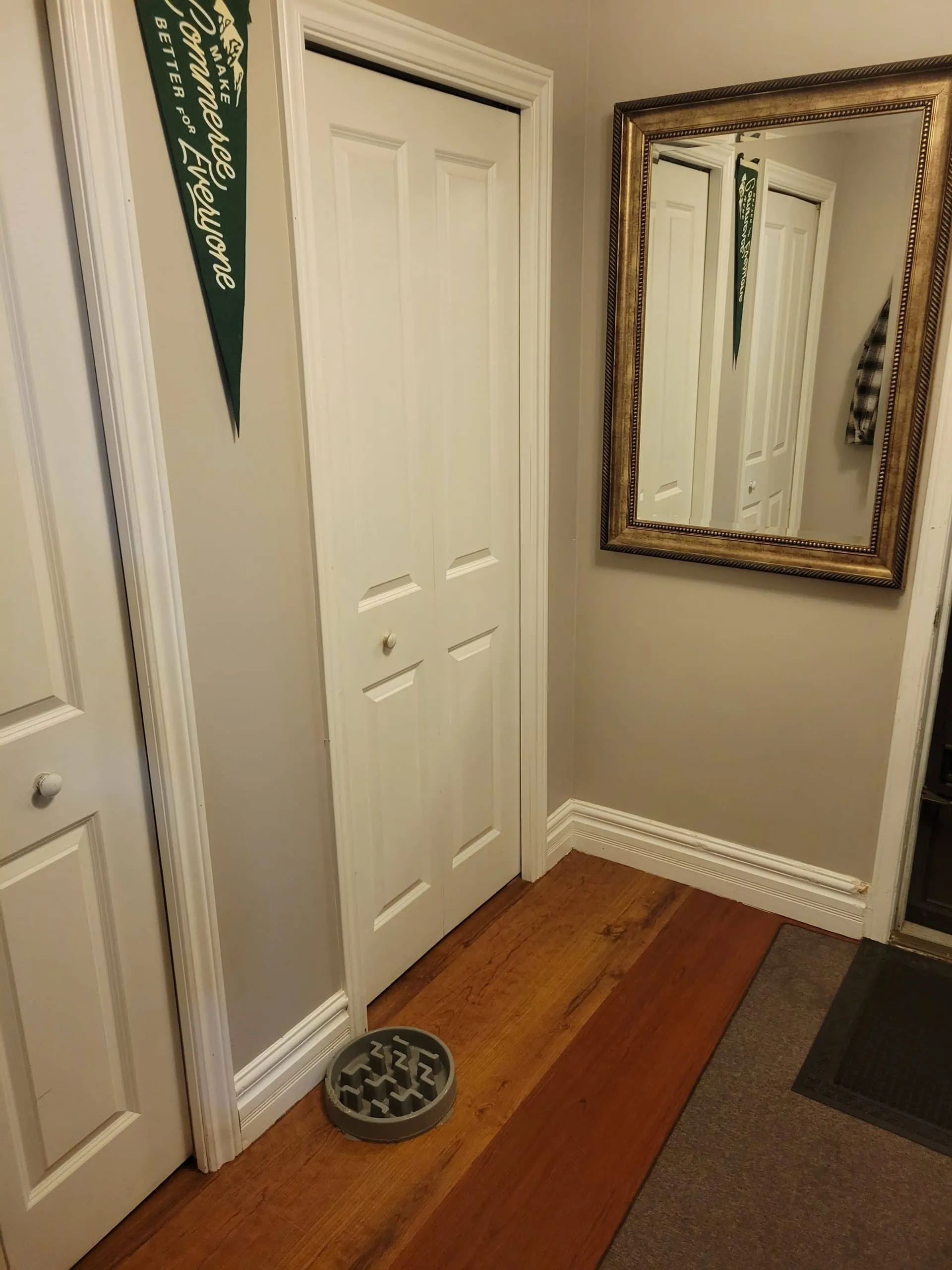Beat the Stuck Wetness in Your Winter Boots With These Fun and Simple Tricks
To beat stuck wetness in your winter boots, try stuffing them with newspaper to absorb moisture quickly or invest in a boot dryer. Keep your boots fresh by filling old socks with baking soda and placing them inside overnight. Use a quality water repellent and check those seams to keep water out. Remember to store your boots dry, using moisture absorbers. Stick around to discover more tips for keeping your winter footwear in top shape!

The Importance of Water-Resistant Boots
When winter hits and snow begins to pile up, having water-resistant boots becomes essential for keeping your feet dry and comfortable.
You want to serve your community, whether volunteering in a winter festival or helping neighbors with shoveling. Water-resistant boots protect you from the cold, wet conditions that can lead to discomfort or even frostbite.
Plus, they help maintain your energy and focus, allowing you to fully engage in your activities. Look for boots with quality materials and effective waterproofing, ensuring they’ll keep your feet warm and dry.
Investing in a good pair won’t only enhance your winter experience but also empower you to assist others without worrying about your own comfort.
Stay dry, stay active, and serve with joy!
Quick Drying Techniques for Wet Boots
When your boots get soaked, you need quick drying solutions to prevent damage.
Try stuffing them with newspaper to absorb moisture, or consider investing in a boot dryer for faster results.
These methods will help keep your footwear in top shape for your next winter adventure.
Newspaper Stuffing Method
If you’ve ever found yourself trudging through slush only to return home with soaked boots, the newspaper stuffing method is a game-changer.
Grab some old newspapers, crumple them up, and stuff them inside your wet boots. The newspaper’s absorbent properties will draw moisture away from the interior, helping your boots dry faster.
Make sure to replace the paper every few hours, especially if it’s particularly damp. This technique not only speeds up drying but also helps maintain your boots’ shape.
Plus, it’s eco-friendly! By using this simple method, you’re not just caring for your own gear; you’re also setting a great example for others who want to keep their winter footwear in top condition.
Give it a try!
Boot Dryer Options
For those who regularly face wet and chilly conditions, investing in a boot dryer can be a lifesaver.
These handy devices use warm air circulation to dry your boots quickly and efficiently, guaranteeing they’re ready for your next adventure. Look for models with adjustable heat settings to prevent damage to materials.
If you’re on a budget, consider DIY options like placing your boots near a heater or using a hairdryer on a low setting, keeping it at a safe distance.
To enhance the drying process, you can also add dryer balls or crumpled newspaper inside your boots.
Whatever method you choose, keeping your boots dry not only extends their life but also assures your comfort, so you can continue serving others with ease.
DIY Boot Deodorizers for Freshness
Ever wondered how to keep your winter boots smelling fresh? You can easily whip up some DIY boot deodorizers that not only combat odors but also add a personal touch.
One simple method is to fill a pair of old socks with baking soda and tie them off. Place these in your boots overnight to absorb any unpleasant smells.
Alternatively, mix a few drops of your favorite essential oil with water in a spray bottle. Lightly spritz the inside of your boots for a revitalizing scent.
For an extra boost, consider adding dried herbs like lavender or rosemary to the baking soda.
These simple tricks will keep your boots fresh and ready to serve you, ensuring you can enjoy your winter adventures!

Effective Water-Repellent Solutions
While winter boots are essential for braving the cold, ensuring they’re water-repellent is crucial for keeping your feet dry and comfortable.
To achieve this, consider using a high-quality spray-on water repellent specifically designed for your boot material. Simply clean your boots, let them dry, and apply the spray evenly, focusing on seams and stitching.
Alternatively, you can opt for beeswax or silicone-based products for leather boots; just rub them in well for effective protection.
Remember to reapply every few weeks, especially after heavy use.
Proper Storage Tips to Prevent Moisture
To keep your winter boots in top shape, proper storage is key.
Start by ensuring they’re completely dry before storing them, and consider using moisture absorbers to keep excess dampness at bay.
Finding the right conditions, like a cool, dry place, can make all the difference in preventing mold and odors.
Drying Techniques for Boots
When you come in from the cold, it’s important to dry your boots properly to prevent moisture buildup that can lead to unpleasant odors and damage.
Start by removing the insoles and laces, allowing both to air out. Use newspaper or paper towels to stuff the boots, absorbing excess moisture.
Avoid direct heat sources like radiators, as they can warp or crack the material. Instead, place your boots hose cleaning in a well-ventilated area for natural drying.
Consider investing in a boot dryer for a more efficient option.
Once your boots are dry, store them upright to maintain their shape and allow airflow.
Following these steps not only preserves your boots but also guarantees they’re ready to serve you when needed.
Optimal Storage Conditions
Storing your winter boots properly can considerably extend their lifespan and keep them in great shape.
First, choose a cool, dry place away from direct sunlight, as heat can damage the materials. Avoid damp basements or unventilated areas that may trap moisture.
When storing, make certain your boots are clean and completely dry to prevent mold and mildew. Use boot trees or stuff them with newspaper to help maintain their shape.
Additionally, keep them upright to avoid creasing and deformation. If you’re planning to store them for long periods, consider using breathable storage bags.
Use of Moisture Absorbers
Moisture absorbers are essential for protecting your winter boots from dampness and potential damage during storage. These simple tools, like silica gel packs or activated charcoal, work wonders by soaking up excess moisture, keeping your boots dry and fresh.
When you store your boots, place a few moisture absorbers inside each one. This not only helps prevent mildew but also maintains their shape.
If you’re looking to serve your friends or family, consider sharing your moisture absorber tips with them. You’ll help them keep their winter footwear in top shape, too.
Regular Maintenance for Longevity and Comfort
Although winter boots are designed to withstand harsh conditions, regular maintenance is essential to guarantee their longevity and comfort.
Start by cleaning your boots after every wear to remove dirt and salt, which can damage materials over time. Use a damp cloth and mild soap, then let them air dry.
Condition leather boots with a suitable product to keep them supple and water-resistant.
Don’t forget to inspect the soles for wear—replace them if they’re worn down.
Finally, store your boots in a cool, dry place with proper shape maintainers to prevent creasing.
Frequently Asked Questions
Can I Use Hairdryers to Dry My Wet Boots?
You can use a hairdryer to dry your wet boots, but keep it on a low setting. Move it around to avoid overheating any spots, and make sure to maintain a safe distance from the material.
Are There Specific Materials That Dry Faster Than Others?
Sure, you could dry your boots faster if they were made of unicorn skin, but since that’s unrealistic, opt for materials like synthetic fibers or waterproof leather. They typically dry much quicker than canvas or fabric.
How Often Should I Clean My Winter Boots?
You should clean your winter boots regularly, especially after heavy use. Aim for at least once a month, or more often if they get muddy or wet. Keeping them clean helps maintain their longevity and appearance.
What Should I Do if My Boots Develop Mold?
If your boots develop mold, act quickly—about 70% of mold thrives in damp conditions. Clean them with a mixture of vinegar and water, then dry thoroughly. Regular maintenance helps prevent mold and keeps them fresh for others.
Can I Waterproof My Boots After Purchasing Them?
Yes, you can waterproof your boots after purchasing them. Just clean them thoroughly, then apply a suitable waterproofing spray or wax. This’ll help protect them from moisture and extend their lifespan, serving you well in wet conditions.
Conclusion
So, there you have it! With these tricks, you can finally say goodbye to squelchy boots that make you feel like you’re walking through a swamp. Who needs a personal sauna when you can just rock wet socks for the winter? Seriously though, keep those boots dry and fresh, and you won’t just survive winter—you’ll thrive. Now, go forth and conquer the cold, one dry step at a time, and maybe even impress your friends with your newfound boot wisdom!